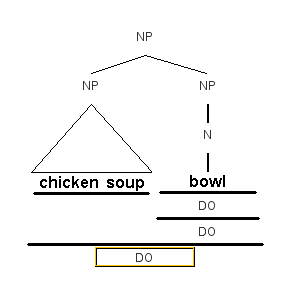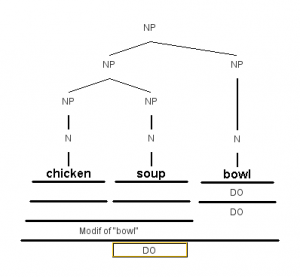Almost done Pwips! Congratulations! As you review for the final, make sure you study Professor Baumgardt’s handouts. They nicely summarize all the main topics that we covered. Also, review sample sentences and diagrams. You should be able to diagram sentences down to the very last word. Professor Baumgardt has a study guide that covers everything you need to study.
Since diagramming will be a crucial part of the final, here’s a review of some of the main steps and details to keep in mind:
Diagramming steps–
1. Create the “S” node over the whole sentence
2. Create NP node and PredPhr node, and nodes for any postcore or precore elements.
3. Divide the PredPhr into the VP and any other elements that may be there such as NPs and PrepPhrs
4. Divide the VP into the head V and any Auxiliaries and modifiers
5. Divide any NPs into nodes of its head N, and any other elements such as adjective phrases, PrepPhrs, DetPhrs, etc.
6. Divide any PrepPhr into Prep + NP
7. Divide any Detphr into any pre-determiners (PreDet), the main Det, and post-determiners (Post-Det). Also, mark the “of” as a Prep in form and Link in function.
8. Divide any AdjPhr into its head Adj and any comparative elements (like “more” or “bigger”) and any modifiers of that head Adj
9. Divide any AdvPhr into its head Adv and any comparative elements (like “more”) and other Advs
10. Remember that the function of the head of the phrase is the function of the whole phrase and vice versa.
See page 45 for a list of diagram Form and Function labels. Also note pp. 48-9 for the definitions of the different phrases we learned about.
Good luck all! Study hard!


